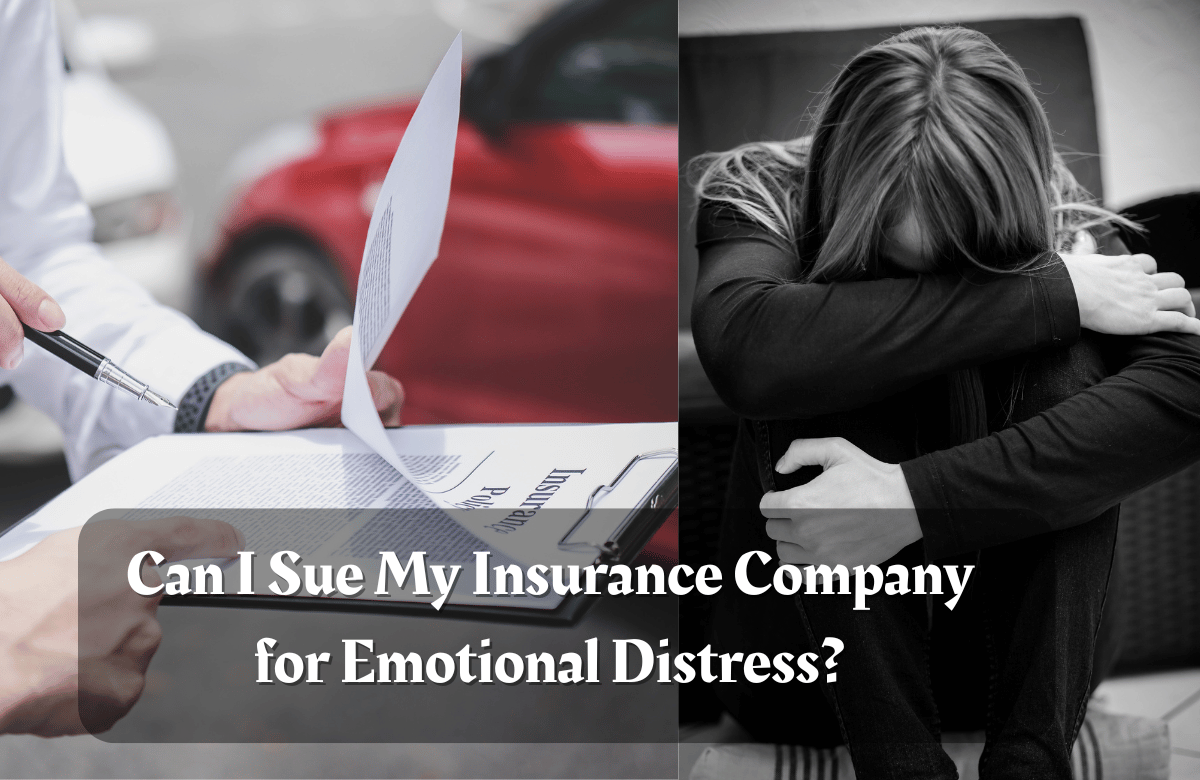Do you want to ensure your family has money if something happens to you? Life insurance is like a safety net that gives your family money if you pass away unexpectedly. However, figuring out which type of life insurance to get can be confusing. One big choice is between term and whole life insurance.
Life insurance is like a promise between you and an insurance company. If something happens to you and you pass away, the insurance company agrees to give a certain amount of money to the person you choose (called the beneficiary). This money, known as the death benefit, is meant to help your loved ones financially. It’s like a safety net to ensure they can still live comfortably even if you’re not there to provide for them.
Choosing the right life insurance is important to ensure it fits your needs and money plans. Deciding between term life insurance and whole life insurance includes:
- Understanding your priorities.
- Considering your financial situation.
- Evaluating the long-term objectives you aim to achieve for your family.
Between term life insurance and whole life insurance
This article highlights the seven key differences between term and whole life insurance. By delving into these distinctions, readers will gain a deeper understanding of each policy’s features, benefits, and drawbacks.
Keep following along as we explain the details of term and whole life insurance. We’ll give you the information you need to make a smart and informed decision, ensuring the financial safety of your loved ones.
Table of Contents
Definition and Features of Term Life Insurance

Before we get into the nitty-gritty details of term life insurance, let’s have a quick look. Term life insurance is a temporary and specific kind of life coverage. It’s there to protect you for a specific period. This type is great when you need financial security, like raising a family or paying off a mortgage.
Unlike whole life insurance, term life insurance doesn’t build up any cash value over time. Instead, it focuses on giving a payout to your loved ones if something happens to you while the policy is active. It’s known for being affordable and flexible, which makes it a popular choice for people with different financial needs at different points in life.
Now, let’s dive into the important features of term life insurance.
Temporary coverage: Life insurance is like a safety net for a set amount of time. It’s perfect for tackling specific financial challenges that might pop up in the short to medium term. Whether you’re looking to pay off debts or support your dependents until they’re financially independent, term life insurance covers you during those periods.
Duration of the policy: With term life insurance, you get to pick how long you want the coverage to last, usually anywhere from 5 to 30 years. When that term is up, you have options. You can renew the policy, convert it to a permanent one, or decide not to continue. This flexibility is great because it lets you adjust your coverage based on your life changes. So, if your needs evolve, your insurance can too.
Premiums: Term life insurance is known for its affordability, with fixed premiums throughout the policy term. This cost-effective nature makes it accessible for individuals who need coverage during specific life stages but may have budget constraints.
Death benefits: The main job of term life insurance is to provide a tax-free amount of money to the people you’ve chosen (beneficiaries) if you pass away while the insurance is in effect. This lump sum is there to help them with urgent costs, replace any lost income, and handle other money matters. Think of it as a financial safety net for your loved ones during a certain time.
Flexibility in coverage: Term life insurance is like a promise to give your family or loved ones money if something happens to you while the insurance is active. This money is tax-free and can help them with urgent expenses, compensate for lost income, and cover other money needs. It’s a way to ensure they’re financially okay during a certain time.
Definition and Features of Whole Life Insurance
Before discussing life insurance details, let’s get a quick overview. Whole life insurance sticks with you for your whole life. It’s not like term life insurance that only lasts for a set time. It’s like having lifelong coverage, providing a safety net for you and your loved ones.
It’s like a lifelong safety net for you and your loved ones. People usually pick whole life insurance when they want coverage for their entire life and a guaranteed payout for their loved ones when they pass away. It’s like a long-term plan for your money and your family’s future.
Now, let’s explore the key features of whole life insurance in more detail.
Permanent coverage: Whole life insurance is designed to provide coverage for the entirety of the insured individual’s life. This permanence ensures that the policy remains in force as long as premiums are paid, offering security for the policyholder and their beneficiaries.
Lifelong duration: While term life insurance has a specific time limit, whole life insurance doesn’t expire. It stays with you throughout your life, providing coverage as long as you keep up with the premiums. It’s a more permanent kind of insurance. The coverage continues for the insured’s entire lifetime, making it an attractive option for those looking for a lifelong financial safety net and considering estate planning.
Premiums: Usually, the payments you make for whole life insurance, known as premiums, are higher than what you’d pay for term life insurance. It’s because whole-life insurance lasts your whole life and builds cash value, so the cost is a bit more. But for some people, the long-term benefits are worth the extra expense.
Even though whole life insurance premiums are higher, they stay the same for the entire time you have the policy. This steady premium structure gives you financial predictability, meaning you always know how much you’ll pay. It helps plan your finances in the long run.
Cash value accumulation: A unique feature of whole life insurance is cash value accumulation. Some money goes into a cash value account when you pay your life insurance premium. The cool part is that this cash value grows without you paying taxes immediately. It’s a tax-deferred way for that extra money to increase over time.
With whole life insurance, your money builds up as cash value over time. You can use this cash value by taking out loans or making withdrawals. It’s like having a little savings account within your insurance, and you can tap into it if you need money for different things in your life.
Guaranteed death benefits: Whole life insurance guarantees a death benefit to the beneficiaries upon the insured’s death. This benefit is paid out regardless of when the insured passes away as long as the premiums are paid. Ensuring a guaranteed death benefit makes whole life insurance a valuable tool for estate planning and long-term financial security for loved ones.
Cost Comparison

Term life insurance is often more affordable because it’s temporary and doesn’t build up cash value. The premiums, or what you pay regularly, are generally lower than whole-life insurance.
The cost is reduced since it covers a specific time without the extra cash feature. This makes term life insurance a budget-friendly choice for people looking for significant coverage during certain phases of life.
Whole life insurance higher premiums: On the other hand, whole life insurance tends to have higher premiums. Whole life insurance lasts your life, and part of your monthly pay goes into a cash value account. So, it’s a lifelong coverage, and at the same time, you’re building up some extra cash.
It’s like getting both long-term protection and a little savings on the side. The stability and permanence of the coverage contribute to the higher cost. While the premiums are consistent over the policy’s life, the initial investment is greater than term life insurance.
Evaluating cost-effectiveness: When considering the cost-effectiveness of life insurance, it’s essential to align your choice with your specific financial goals. Term life insurance is often considered more cost-effective for individuals focused on short to medium-term needs,
such as income protection during the child-rearing years or paying off a mortgage. The lower premiums allow policyholders to allocate funds to other investments or financial priorities.
Comparing benefits and costs of each type: Even though whole life insurance costs more each month, it comes with extra perks. You build up cash over time, and there’s a guaranteed payout when you pass away.
This cash can be used for different things, giving you more financial options. If you’re thinking about the long haul, planning for the future, or want insurance that’s both protection and an investment, whole life insurance might be worth the higher price.
Investment Component
Term life insurance is straightforward in its structure and purpose, focusing solely on providing a death benefit for a specified term. Unlike whole life insurance, term policies do not have an investment or cash value component. This means that policyholders pay premiums primarily for the death benefit during the policy term without allocating funds to an investment account.
Unlike term life insurance, whole life insurance has something extra—like a savings or investment part called the cash value. Some of what you pay monthly goes into this cash value account, which can increase over time. The growth happens without immediate taxes, and you might get benefits like compounding interest, dividends, or investment returns, depending on the specific type of whole-life policy. And here’s the cool part: you can use the money in this cash value account differently whenever needed. It adds a layer of flexibility to your finances.
One option is to take out a policy loan against the cash value, providing a source of funds for needs such as education expenses, home improvements, or emergencies. Policyholders can also withdraw partially from the cash value, although this may impact the death benefit. It’s important to note that any outstanding loans or withdrawals reduce the death benefit payable to beneficiaries.
Whole life insurance gets more complicated because it’s not just about the death benefit. There’s an investment part called the cash value that adds some complexity. This cash value gives you flexibility with your money and the chance for extra financial benefits. But, it’s crucial to consider whether the higher cost of whole life insurance is worth it, especially when comparing it to the straightforward and affordable nature of term life insurance.
Flexibility and Customization
Term life insurance is super flexible. You can adjust it based on what’s happening in your life. For example, if you’re raising a family, paying off a mortgage, or planning for retirement, you can pick a term length that fits your financial needs.
And the cool part is, as your needs change over time, you can either renew the term policy, turn it into a permanent one, or let it end. It’s like having insurance that adapts to the different stages of your life.
With term life insurance, there’s often the choice to renew the policy when the initial term ends. Even though the premiums might increase if you renew, it’s a handy option to keep your coverage going, especially if you still have financial responsibilities.
Some policies even let you switch to a permanent policy without needing a new medical check-up. This flexibility is great for adapting to your changing needs and ensuring you have the coverage you want.
Whole life insurance policies, particularly participating whole life policies, may pay dividends to policyholders. These dividends can be utilized in various ways, providing an extra layer of customization.
Policyholders can receive dividends as cash, use them to reduce premiums, accumulate them to increase the cash value, or purchase additional paid-up insurance. This flexibility adds a customizable element to whole life insurance, allowing policyholders to adapt their policies based on financial goals.
Whole life insurance policies often allow adding riders, with optional features providing additional coverage. Riders are like add-ons to your insurance policy, and there are a couple of common ones. For example, there’s something called an accelerated death benefit rider.
This lets you get part of the death benefit early if you have a terminal illness. Another common rider is for accidental death coverage, which gives extra money if you pass away due to an accident.
These riders add extra features to your policy based on your specific needs. These riders enhance the customization of the policy, tailoring it to the specific needs and concerns of the policyholder.
Knowing how flexible and customizable term and whole life insurance can be is important to match your plan with what you need and want as things change.
Whether you like the flexibility of term insurance or the customizable features of whole life insurance, each choice has its perks to help with your financial goals.
Suitability for Different Life Stages

Before discussing when term and whole life insurance are good, let’s look quickly. Deciding on life insurance depends on different things like how old you are, your family situation, and what money goals you have in the long run. For young families, term life insurance is often a great pick. It’s temporary, inexpensive, and perfect for handling big-money responsibilities while raising kids. It gives you just the right coverage you need for that time.
Whole life insurance is a better fit for people planning for the long haul. It’s there for your whole life and comes with an investment part. This makes it a strong choice for planning your estate, providing benefits beyond the death payout. Whole life insurance can also be valuable in a complete retirement strategy. It’s like a solid tool for long-term financial planning.
Term Life Insurance for Young Families
Term life insurance is a good and affordable choice for young families with kids who need money to care for them. The lower premiums allow parents to secure significant coverage while managing other immediate expenses, such as education and childcare.
Temporary coverage for financial protection
The temporary nature of term life insurance aligns well with the evolving financial needs of young families. It allows individuals to customize coverage based on specific timeframes, ensuring protection during critical years when financial responsibilities are at their peak.
Whole Life Insurance for Long-Term Financial Planning
Whole life insurance provides a stable and permanent solution for individuals looking beyond immediate financial needs. The death benefit and potential cash value growth make it an effective tool for estate planning, allowing for the tax-efficient transfer of wealth to heirs.
Retirement income considerations
The money that builds up in the cash value part of whole life insurance can be a smart strategy for generating income during retirement. It’s like having an extra savings pot you can tap into when you’re ready to enjoy retirement. Individuals can access the accumulated cash value to supplement their retirement funds, providing a reliable and tax-advantaged income stream during retirement.
Conclusion
Choosing between term life insurance and whole life insurance is an important decision. It depends on what’s most important to you, how much money you have, and what you want to achieve in the long run. This article has outlined seven key differences between these two types of life insurance, shedding light on their features, benefits, and drawbacks.
Term life insurance provides temporary coverage, making it an affordable and flexible option for individuals facing specific financial challenges or responsibilities during certain life stages. The ability to choose the policy duration, fixed premiums, and tax-free death benefits make it a popular choice for those focused on short to medium-term needs.
On the other hand, whole life insurance offers permanent coverage throughout the insured individual’s lifetime, with higher premiums reflecting the lifelong nature of the policy. The added benefit of cash value accumulation, guaranteed death benefits, and flexibility through policy loans or withdrawals add complexity. Still, they may appeal to those seeking a long-term financial safety net and an investment component.
Thinking about how much it costs is a big part of deciding. Term life insurance is often less expensive because it’s temporary and doesn’t grow money over the years.
Despite higher premiums, whole life insurance provides added financial perks and a tool for estate planning and long-term financial security.
The investment component introduces another layer of divergence between the two types, with term life insurance focusing solely on providing a death benefit without an investment or cash value element. Whole life insurance’s cash value accumulation offers additional financial options, allowing policyholders to access funds through loans or withdrawals, albeit with potential impacts on the death benefit.
Flexibility and customization are key aspects to consider, with term life insurance offering adaptability to changing life stages through options like policy renewal or conversion. Whole life insurance, particularly with dividend payments, riders, and additional coverage options, provides more customization to align with specific financial goals and concerns.
Finally, suitability for different life stages underscores the importance of aligning the choice of life insurance with individual circumstances. Term life insurance is well-suited for young families facing immediate financial responsibilities. In contrast, whole life insurance is a robust choice for long-term financial planning, estate considerations, and retirement income strategies.
What is life insurance?
Life insurance is like a deal between a person and an insurance company. If the person passes away, the insurance company promises to give a certain amount of money to the person they chose to get it (called the beneficiary).
Why do I need life insurance?
Life insurance is a way to care for your family if you’re not there anymore. When you pass away, it gives money to your loved ones. They can use this money to pay for things like funerals and debts and make up for the money they would have earned to support the family. It helps make sure your family has the financial help they need.
What are the main types of life insurance?
There are two main kinds of life insurance: term and permanent. Permanent life insurance has different types, like whole, universal, and variable life.
What is the difference between term and whole life insurance?
Term life insurance lasts for a certain time, but whole life insurance lasts your whole life. Whole life insurance also has a money part called cash value, which term life insurance doesn’t have.
What is the cash value of life insurance?
Cash value is like savings in certain permanent life insurance plans, such as whole life. It lets the person who has the insurance build up money over time. This money can be borrowed or taken out if needed.
Can I change my life insurance coverage?
Yes, you can often adjust your life insurance coverage. With term life insurance, you can typically renew or convert to a permanent policy. Whole life insurance policies may have options to increase or decrease the death benefit.
How are life insurance premiums determined?
The cost of life insurance, called premiums, depends on how old and healthy the person getting the insurance is, their lifestyle, how much coverage they want, and the type of policy. Usually, younger and healthier people pay less money for their premiums.
Can I have multiple life insurance policies?
It’s possible to have multiple life insurance policies to meet different financial needs. Some people choose a combination of term and permanent policies.
What happens if I outlive my term life insurance policy?
If you live beyond the time your term life insurance is supposed to last, it stops, and you don’t get any money. But, some policies might let you renew it or switch to a different kind that lasts longer.
[Note: The content provided in this article is for informational purposes only and should not be considered as financial or legal advice. Consult with a professional advisor or accountant for personalized guidance.]






